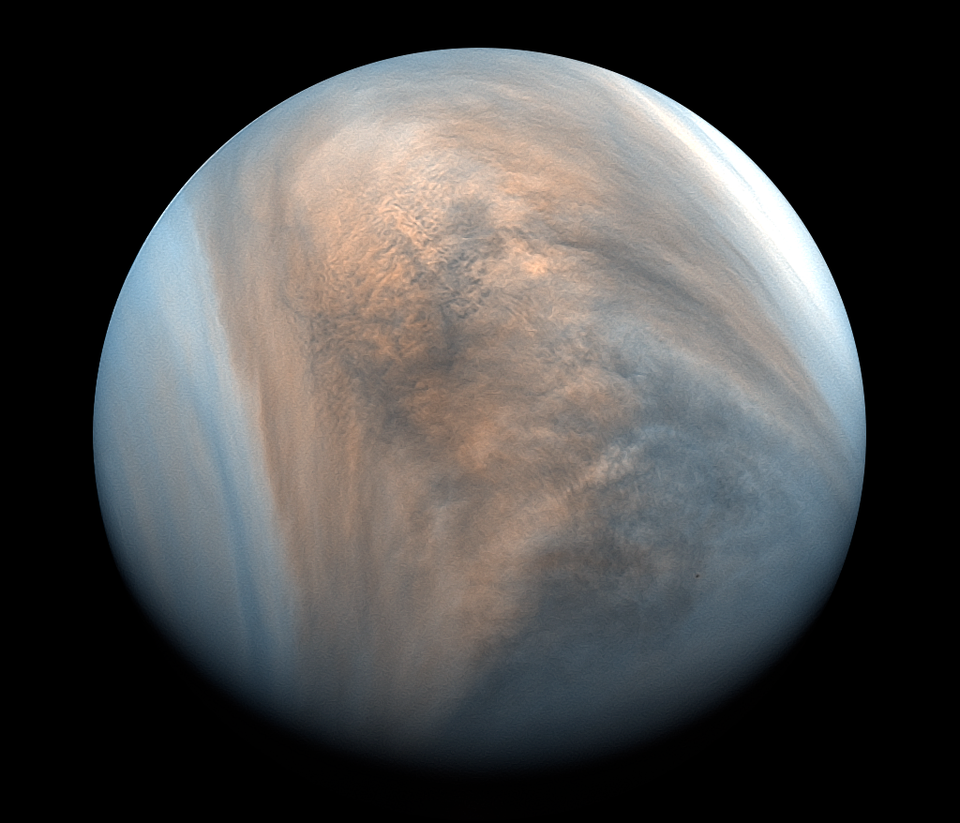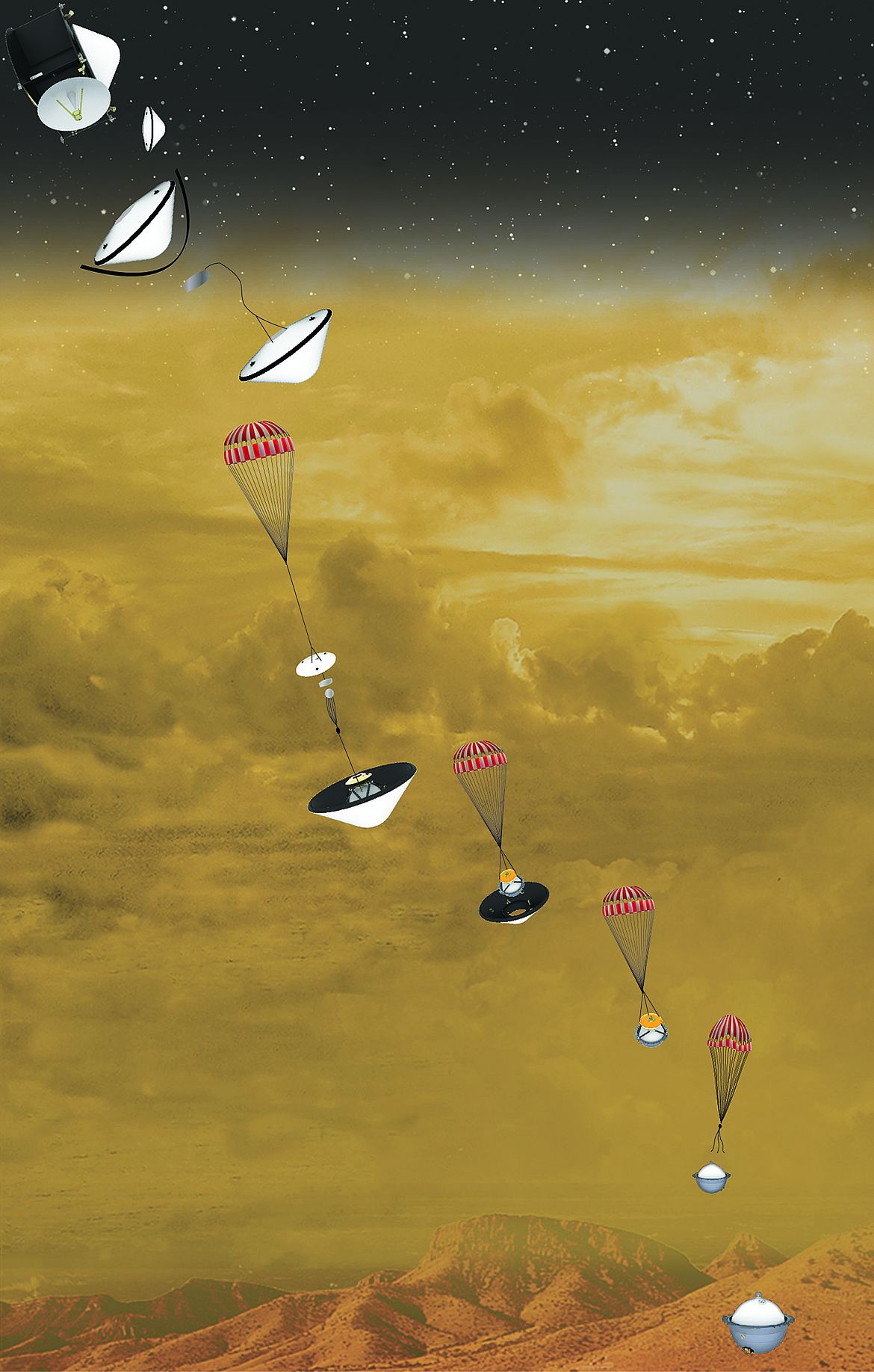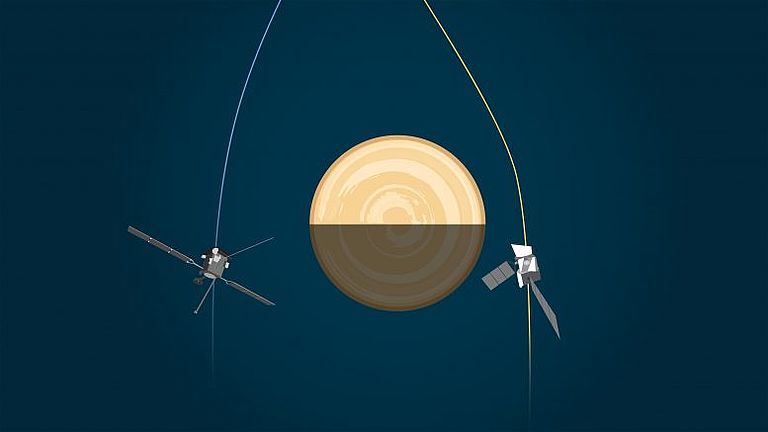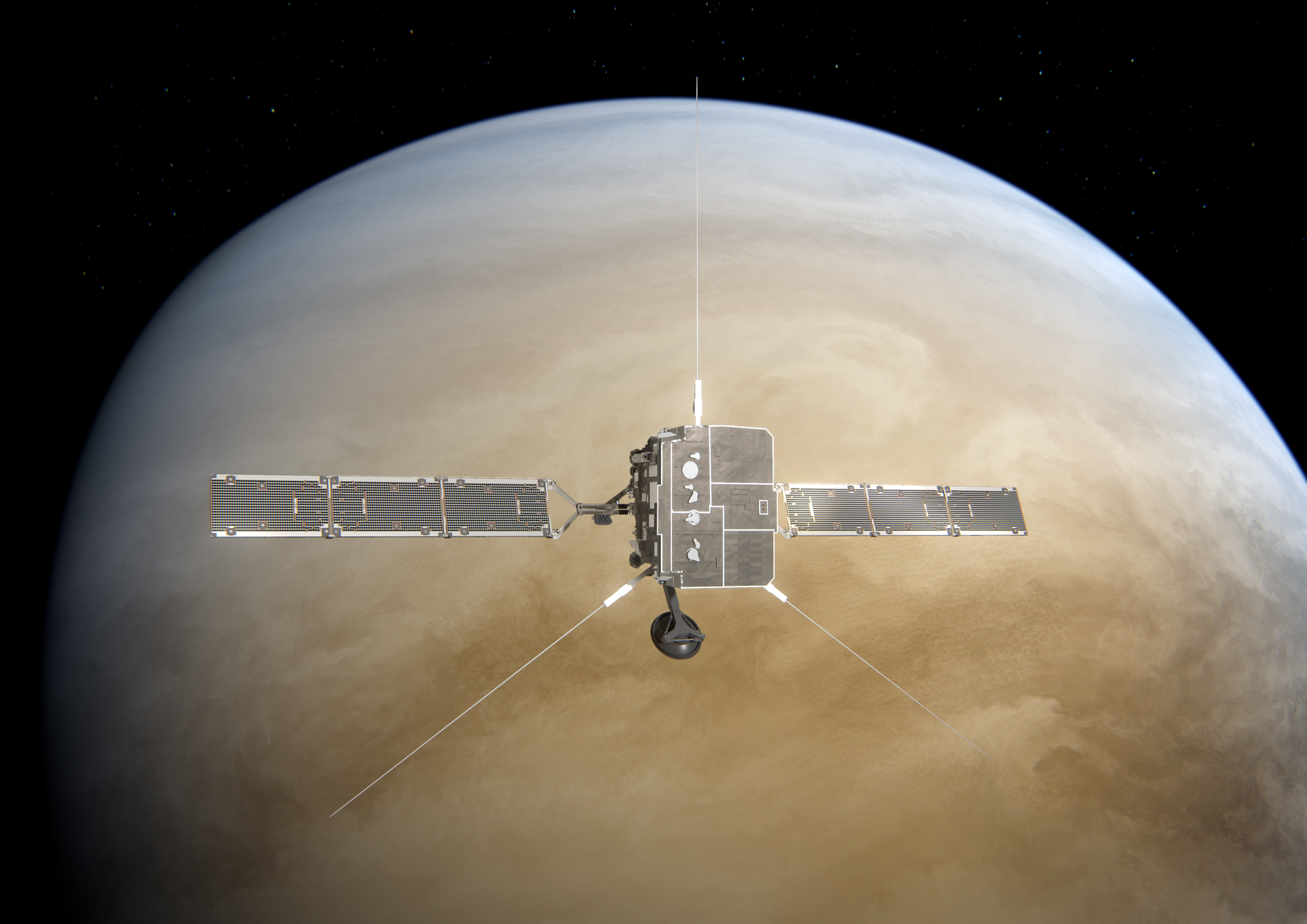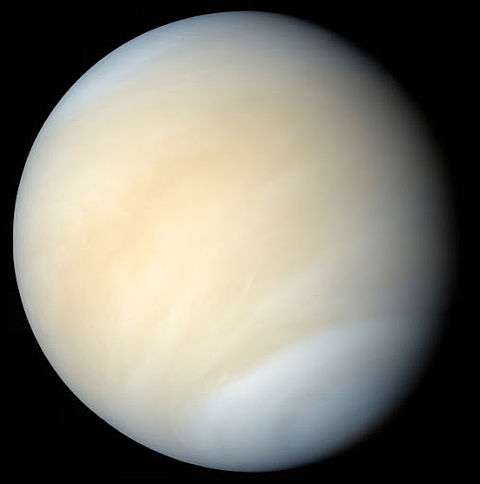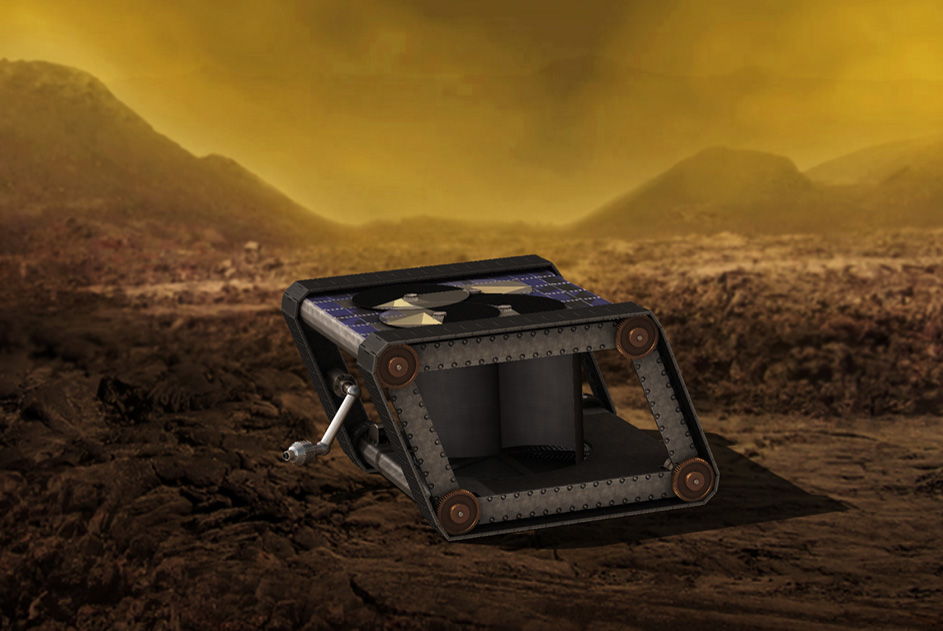Astronomers have discovered the phosphorus-hydrogen compound phosphine in the atmosphere of Venus. What may not sound very spectacular at first sight has caused a stir not only in the space community. The reason for this is that on Earth phosphine is mostly created through biological processes, which is why the detection of the compound in the atmosphere of an Earth-like planet is considered an indication of the existence of life. So is there life on Venus? Hours before the official announcement of the discovery, this question was already hotly discussed on Twitter. After the press conference of the Royal Astronomical Society, the hashtag "Venus" quickly became the world's leading Twitter trend. At OHB, however, Venus has been in vogue for quite some time. In a recently completed in-house study, a concept was developed to bring measuring instruments into the planet's atmosphere and conduct an in-situ search for traces of life.
Due to the extreme conditions on its surface - temperatures well over 400 degrees Celsius and a pressure similar to that in the deep sea - no attempt has been made to land on Venus since the 1980s. To prove the existence of life on the planet, however, a mission into the atmosphere is, according to current knowledge, the most suitable way.
OHB has been working for some time now on the question of how instruments suitable for the search for life can be brought to Venus. Only recently, an in-house study on this subject was completed in close collaboration with scientists from various universities. The result of this study is a mission architecture that aims to place one or more probes in the Venusian atmosphere, flying autonomously for several months.
Special environmental conditions
In the atmosphere of Venus the conditions are not quite easy either, but at least they are much less hostile than on the surface. Pressure and temperature decrease with increasing altitude. At an altitude of about 50 kilometres the cloud layer of Venus begins. In this region, the pressure is roughly the same as on the surface of the Earth and temperatures are only around 60 degrees Celsius. However, especially in the high atmosphere above the equatorial region of the planet, strong winds blow, which can reach top speeds of over 360 kilometres per hour. In the past, there have been several concepts for exploring the atmosphere of Venus with balloons, some of which have been put into practice. However, since the strong winds inevitably lead to a balloon being driven to the night side of the planet sooner or later and thus being cut off from its energy supply, this method is only of limited suitability for the search for life.
For this reason, the mission architecture developed by OHB for analysing the atmosphere provides for one or two autonomous aircraft of different sizes to be equipped with various measuring instruments.
Measuring instruments for the search for life
Since the chemical composition of the atmosphere is of particular interest in the search for life, a combination of a gas chromatograph and a mass spectrometer is planned. This combination is particularly advantageous because the gas mixture of the atmosphere can first be separated into its components with the gas chromatograph and then analysed more precisely with the mass spectrometer. With this method, most organic molecules can be reliably detected.
In order to analyse larger particles and search for microorganisms in the clouds, the aircraft will also be equipped with a microscope.
A laser spectrometer is also planned as a further instrument with which the chemical composition of certain atmospheric trace molecules can be investigated. These include, among others, phosphine.
Autonomous aircraft as atmospheric probes
Since the aircraft are to fly autonomously in the Venus atmosphere for several months, their design must take particular account of the conditions prevailing there. In order not to drift to the night side, the aircraft must be able to fly against the winds blowing in the atmosphere. This requires energy that can be generated most easily from sunlight. For this purpose, the wings of the airplanes are to be equipped with solar cells on their upper and lower sides. The fact that the underside of the airplanes can also be used is a special feature of the Venusian atmosphere: a large part of the incident solar radiation is reflected by the clouds and can therefore be used for to generate additional energy. The energy will be used to drive propellers that will allow the aircraft to actively move against the wind. Since the strongest winds blow over the equatorial region, this area is to be avoided. Instead, the planes are to fly close to the poles, where the winds are less strong and the energy requirement is therefore significantly lower. Due to the constant mixing of the atmosphere, this restriction of the sampled area has little influence on the quality of the results. The wingspan of the larger aircraft is to be just under three and a half meters. A T-shaped tail unit is planned to ensure position stabilisation and flight control. In order to facilitate transport, the aircraft will be designed to be foldable.
The planes are to spend the almost two-year transfer from Earth to Venus safely stowed away in an entry capsule. This capsule will be brought to Venus atop an orbiter. Once in Venus orbit, the entry capsule will be separated from the orbiter and descend into the atmosphere of the planet. The planes will be deployed at an altitude of a good 50 kilometres above the surface. The orbiter is to be in a low Venus orbit at this time and serve as a relay station for communication between the aircraft and Earth. In addition, it is planned to equip the orbiter with remote sensing instruments that will make supplementary measurements possible.
Favourable launch conditions every eight years
Particularly favourable launch windows for the mission open every eight years. The next one begins in 2023 and ends in 2025. From a technical point of view, a launch is possible in 2026 at the earliest - but only if the necessary funds are made available at the beginning of 2021.
Discovery of phosphine as a new scientific incentive
In recent years, however, missions to Venus have not been very high on the agendas of space agencies due to the technical challenges involved and the lack of scientific incentive. Analyses of the Venusian atmosphere and the search for life were - if at all - carried out with telescopes from Earth.
But determining the atmospheric composition of a foreign planet from Earth is anything but easy. In fact, the idea of distinguishing different atmospheric components over a distance of millions of kilometres with a telescope sounds rather absurd. Of course, even the best telescopes are not able to make out individual molecules in the Venusian atmospher. What is quite possible, however, is the analysis of the electromagnetic waves coming from Venus to Earth. On its way to Earth, the reflected sunlight passes through the atmosphere of Venus, which absorbs specific ranges of the electromagnetic spectrum, creating a characteristic fingerprint. From this fingerprint it can then be deduced which atoms and molecules are present in the atmosphere.
It is precisely this principle that the research group led by Jane Greaves at Cardiff University has used recently to analyse the atmosphere of Venus. The scientists observed the planet with the James Clerk Maxwell telescope in Hawaii in the wavelength range of one millimetre - and found the first indications of the presence of the rare molecule phosphine in the resulting spectrum. To confirm their finding, the working group repeated the observation with the Atacama Large Millimeter/Submillimeter Array (ALMA) in Chile and received the same result: Phosphine is definitely present in the atmosphere of Venus.
The proportion of the rare molecule in the atmosphere could then be determined by model calculations. The scientists arrived at a value of 20 ppb (parts per billion). At first glance, this sounds like an extremely low figure, but even this value can only be achieved if the phosphorus-hydrogen compound is constantly being reproduced. The reason for this is the acidic milieu of the Venus atmosphere, which ensures that the existing molecules are broken down after only a short time. Which processes lie at the root of this continuous formation of phosphine is still a mystery to scientists - and gives rise to speculation about the presence of life in the Venus atmosphere.
Lack of knowledge justifies Venus mission
Although the working group emphasizes that it has by no means provided evidence for the existence of life on Venus, it also makes it clear that the presence of phosphine in the atmosphere cannot be explained by any of the known geochemical processes on the planet. Thus Venus suddenly becomes more important in the search for extra-terrestrial life.
OHB's CEO Marco Fuchs was has been convinced since long before phosphine was discovered in the atmosphere that Venus was worth the trip: "As we know very little about what has produced or perhaps even still produces possible life on Venus, it is high time to send a scientific mission there. To find out whether there are completely different rules of biology in outer space fully justifies such a mission in my view. These findings could then also be very helpful to better estimate the probability of life on the thousands of exoplanets discovered in recent years."

